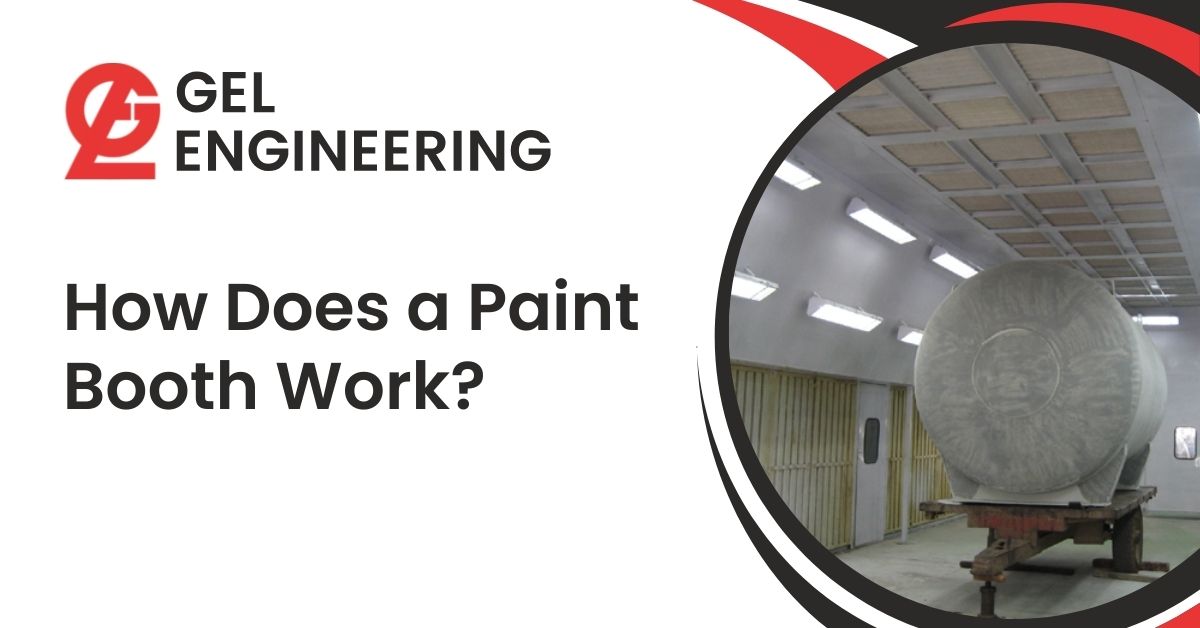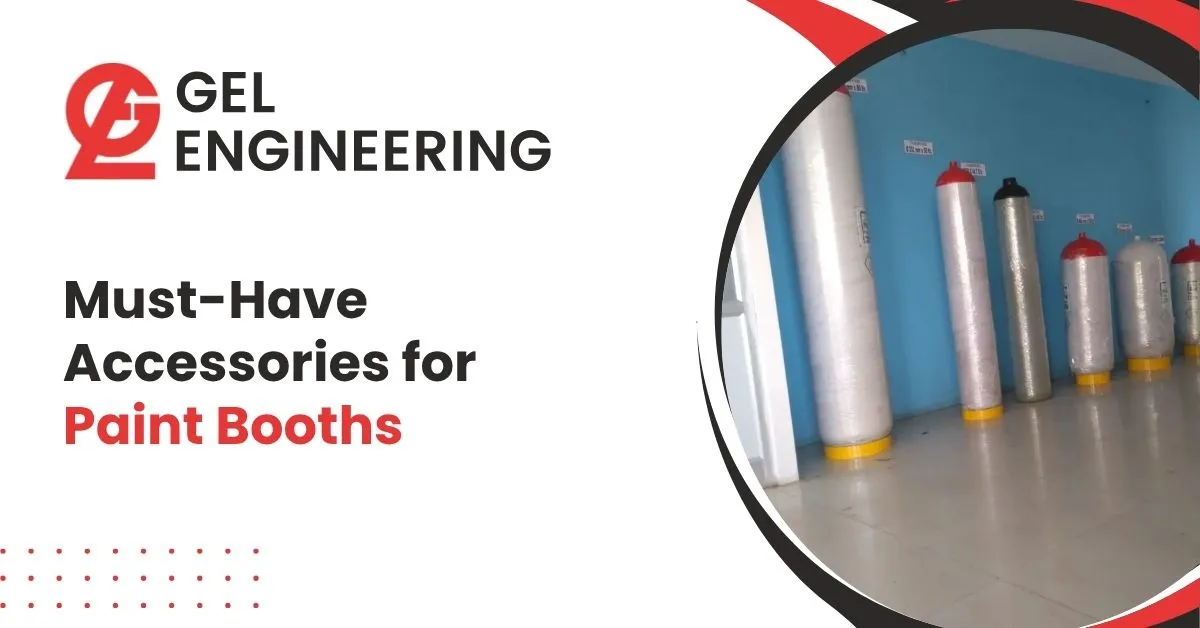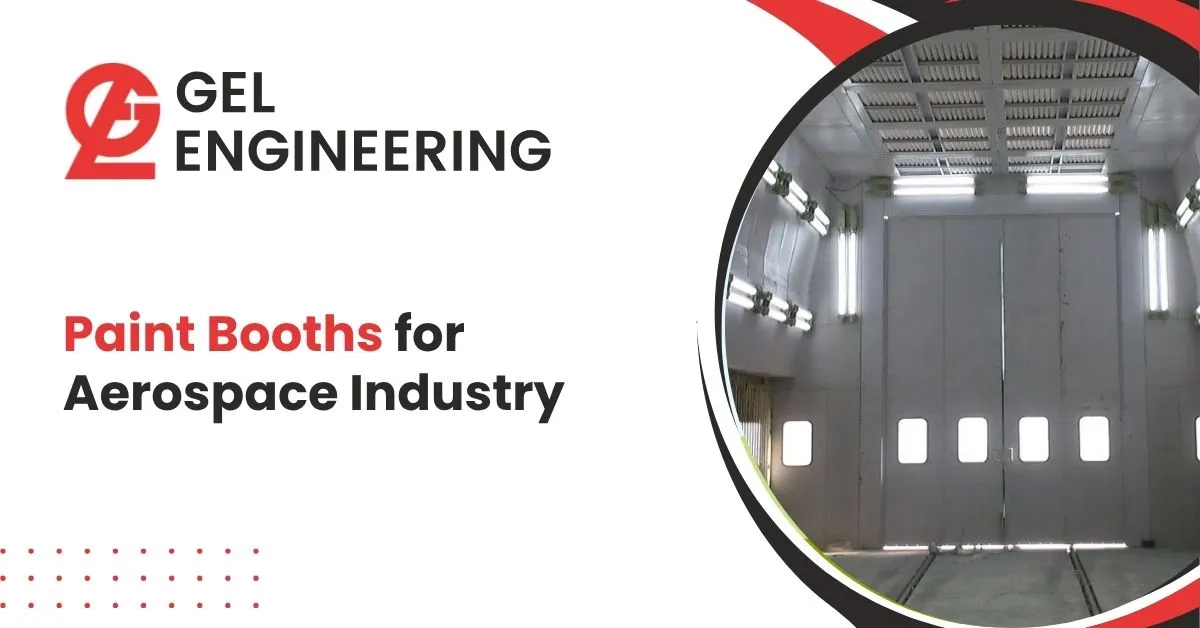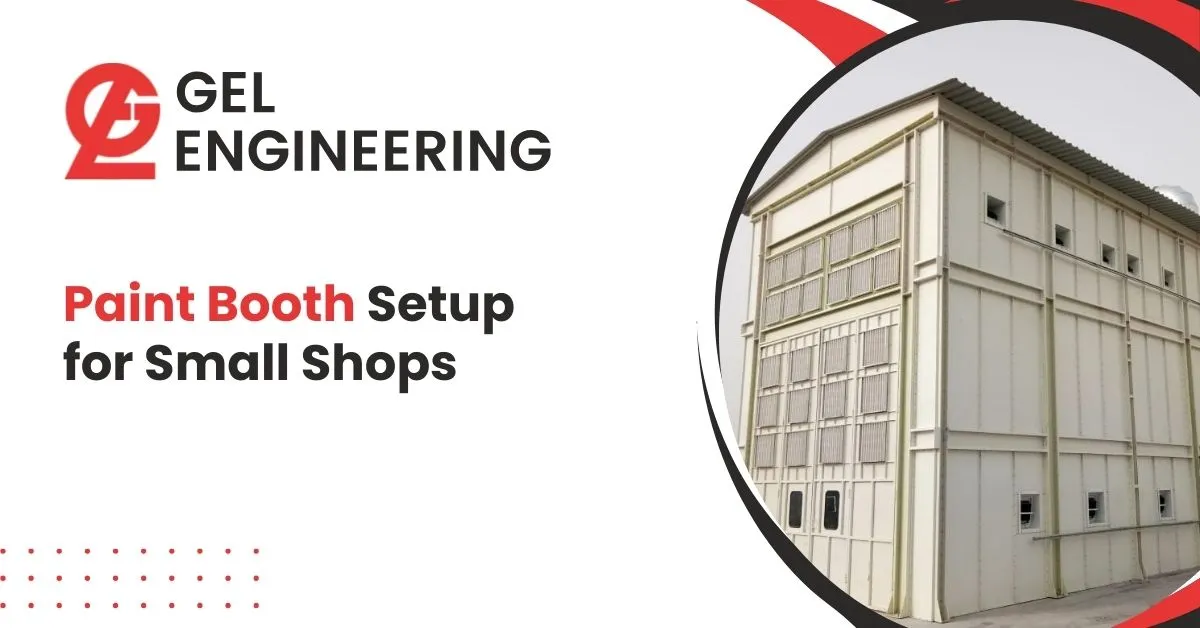Enhance Performance, Safety & Efficiency in Your Spray Painting Process When it comes to industrial…

In various industries, from automotive to aerospace, achieving a flawless finish on painted surfaces is crucial. One of the key components in this process is the paint booth. But how does a paint booth work? This blog will explain the mechanics of paint booths, their types, and their significance in ensuring high-quality finishes.
What is a Paint Booth?
A paint booth is a specialized enclosure designed for painting and finishing operations. It provides a controlled environment that helps to contain overspray, reduce airborne contaminants, and maintain proper ventilation, ensuring that the painting process yields superior results.
How Does a Paint Booth Work?
Airflow Management
Airflow is one of the critical elements in a paint booth. The design of the booth dictates how air moves within the space, which directly impacts the quality of the paint application.
- Cross Draft Airflow: In a cross draft booth, air enters from one side and exits from the opposite side. This method captures overspray effectively and keeps contaminants away from the work area.
- Downdraft Airflow: In a down draft booth, air is pulled down from the ceiling and exits through vents in the floor. This design is particularly effective for larger pieces, as it ensures that paint particles are carried away from the surface being painted.
- Semi-Downdraft Airflow: Combining elements of both, semi-downdraft booths pull air from the sides and ceiling, allowing for a balanced airflow that enhances painting conditions.
Filtration Systems
To maintain a clean environment and ensure the quality of the painted surface, paint booths utilize various filtration systems:
- Pre-Filters: These filters capture larger particles such as dust and dirt, preventing them from contaminating the paint job.
- Main Filters: HEPA (High Efficiency Particulate Air) or paint arrestor filters trap smaller particles and volatile organic compounds (VOCs), ensuring that the air quality remains high throughout the painting process.
- Activated Carbon Filters: Used to capture and neutralize harmful fumes, these filters contribute to a safer working environment.
Ventilation
Proper ventilation is essential to prevent the buildup of flammable vapors and maintain a safe atmosphere. Paint booths are designed with exhaust systems that effectively remove airborne contaminants, ensuring fresh air circulation.
Ready to elevate your painting operations? Discover our range of paint booths and find the perfect fit for your needs.
Lighting
Good lighting is crucial for achieving high-quality finishes. Most paint booths are equipped with bright, even LED lights that minimize shadows and help the painter see details clearly. Proper lighting ensures that the application is consistent and that any imperfections are easily identified.
Temperature and Humidity Control
Temperature and humidity can significantly affect paint adhesion and curing. Many paint booths are equipped with HVAC systems that regulate these factors, ensuring an optimal environment for painting.
Safety Features
Safety is a top priority in paint booth design. Key safety features include:
- Explosion-Proof Equipment: All electrical components must be designed to prevent ignition of flammable materials.
- Emergency Shut-Offs: Clearly labelled emergency shut-off switches should be easily accessible in case of an emergency.
- Personal Protective Equipment (PPE): Operators should always wear appropriate PPE, including masks and gloves, to protect against fumes and particles.
Frequently Asked Questions
How much does it cost to set up a paint booth?
The cost of setting up a paint booth in India can vary significantly based on the type, size, and features, typically ranging from ₹7,00,000 to over ₹75,00,000. Additional expenses for installation, ventilation systems, and safety equipment can also affect the total cost.
How many types of paint booths are there?
There are several types of paint booths, including cross draft, downdraft, semi-downdraft, and portable booths. Each type is designed for specific applications and airflow management, catering to various industries such as automotive and aerospace.
What is the life of a paint booth?
The lifespan of a paint booth can vary depending on factors such as usage, maintenance, and environmental conditions. With proper care and regular maintenance, a well-constructed paint booth can last anywhere from 10 to 20 years or more.
Conclusion
Understanding how a paint booth works is crucial for anyone involved in painting operations. By providing a controlled environment that manages airflow, filtration, ventilation, and safety, paint booths play an essential role in achieving high-quality finishes. Whether you’re in the automotive, aerospace, or manufacturing sector, investing in a quality paint booth can enhance your productivity, improve safety, and ensure superior results.
For expert advice on selecting the right paint booth for your needs, contact us today! Our team is here to help you find the perfect solution for your painting requirements.
Related Guides: Powder Coating Booth




